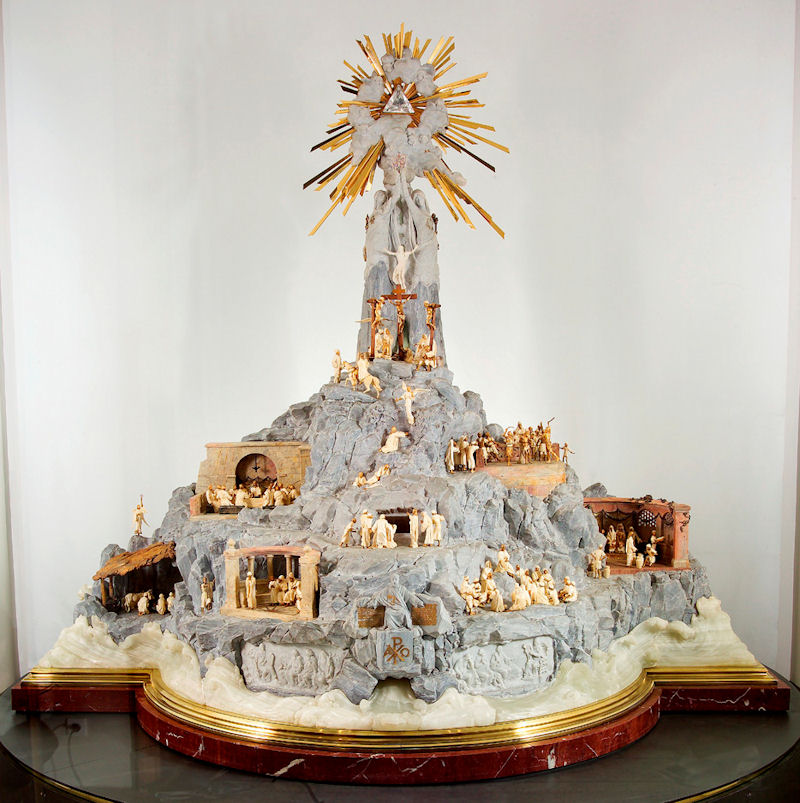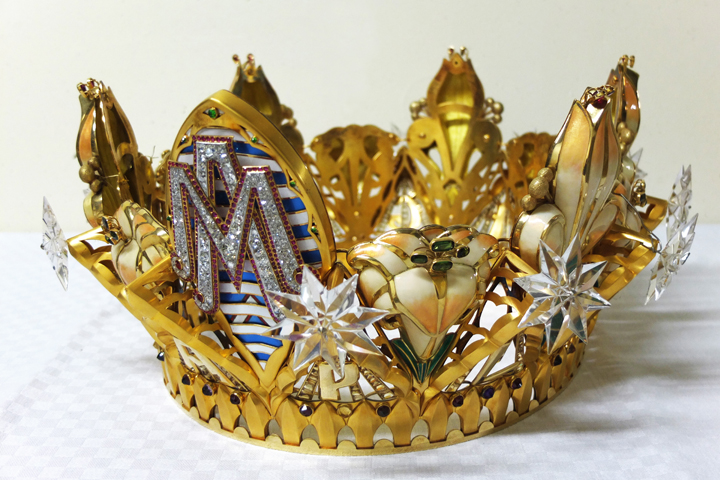Since June 2014, an exhibition dedicated to the jewellery skills of Joseph Chaumet has been held at the Musée du Hiéron in the small but beautiful town of Paray-le-Monial.
I am sure you are already wondering if there is a link between this Joseph Chaumet and the world famous jewellery house: Chaumet. Well, yes! Hence my astonishment at not having read or heard much about this beautiful exhibition. But let’s go back to the story…
The creation of the Chaumet house takes the name we know today during the 19th century, it is actually founded in 1780 by Marie-Etienne Nitot, jeweller appointed by Napoleon I after the Revolution. Between 1815 and 1885, it was run by Jean-Baptiste Fossin, then Jean-Valentin Morel and finally his son Prosper. During the 19th century, the various directors of this company attracted and retained a wealthy clientele from the four corners of the world as well as several royal families. In this respect, the issue of the programme “Secret d’histoire” recently broadcast on France 2, which honoured the no less famous Grand Duchess Charlotte of Luxembourg, showed us several pieces of jewellery that belonged to her, including a tiara made by Chaumet.
The company’s name was changed permanently when Prosper Morel’s daughter married a certain Joseph Chaumet in 1885. He took over the management of the company, and in 1907 set it up on the Place Vendôme. Today, the company has been part of the LVMH group, world leader in the luxury industry, for many years. The aim of this exhibition is to introduce you to Mr Chaumet’s work as a jeweller.
The starting point of this presentation is the Via vitae. This majestic piece was created between 1894 and 1904. Mr. Chaumet devoted ten years of his life to it and thought of this piece as a work of companionship. A devout Catholic, he created this piece as an affirmation of his faith at the dawn of the 20th century. However, the context of the time must be quickly explained in order to better understand the production of such an important work: The Dreyfus affair, the anti-clerical policy of the end of the century, the desire to set up a free school without religious teaching (the Combes law), and then the inevitable separation of Church and State created major splits in civil and political society. In reaction, Joseph Chaumet decided to create the Via Vitae. A form of resistance to the debates of his time, but also the desire to pay a flagrant tribute to God.
Technically, this piece is a feat. It depicts the most important episodes in the life of Christ through scenes animated by 138 figures made of gold and ivory (chryselephantines). It is three metres high and weighs more than three tonnes. The front of the piece depicts the life of Jesus from the Nativity to the Resurrection, while the back shows various symbols representing the Muslim religion, Hinduism, Buddhism and the seven deadly sins. For a time, the piece was considered for the Sacred Heart treasure, but in the end it was only shown for about twenty years and only in a private salon of the Chaumet company. In 1993, it was dismantled; in 2000, it was classified as a National Treasure; finally, it was acquired by the town of Paray-le-Monial in 2004. An enormous restoration work was then undertaken, including the restitution of the rotation system that animates the characters of the different scenes. However, to see the Via Vitæ in motion, you will have to wait for the Heritage Days or make an appointment at the museum. Finally, I would like to add that the host (symbolising the body of Christ and brandished by two female figures at the top of the piece) is set with rubies and diamonds, and the central stone is a cut rock crystal.

The Via Vitæ, in its entirety. Photo: Laurent Chaintreuil

The wedding of Cana. Photo: Tiphaine Bodin for L’internaute magazine

The resurrection of Lazarus. Photo: Tiphaine Bodin for L’internaute magazine

The scourging of Jesus Christ. Photo: Tiphaine Bodin for L’internaute magazine
The exhibition is completed with various documents: photos, preparatory drawings, but also jewels and other very important pieces. The Chaumet family, but also the Chaumet House, participated in the organisation of this event. The parish of Hyères, the museum of Vitré and the sanctuary of Montligeon also made important contributions.

Above, the Crown for the statue of the Virgin (Montligeon), 1933-1935, gold, silver gilt, diamonds, rubies, garnets, topaz, peridots, tourmalines, amethysts, peridots, enamel and crystal, 19 x 40 x 34 cm. Photo: Sanctuary of Montligeon
The exhibition is on display at the Musée du Hiéron in Paray-le-Monial until 4 January 2015. I can only encourage you to go and discover it.
See you soon!






